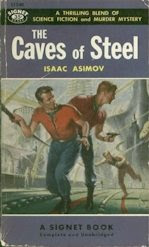 The Magazine of the Week is the first issue, Fall 1949, of the Magazine of Fantasy & Science Fiction, cover by Bill Stone. This initial issue bore the title "Magazine of Fantasy," but the name was expanded by the second issue and has remained "Fantasy & Science Fiction" ever since. F&SF is still going strong, having published over 650 issues to date.
The Magazine of the Week is the first issue, Fall 1949, of the Magazine of Fantasy & Science Fiction, cover by Bill Stone. This initial issue bore the title "Magazine of Fantasy," but the name was expanded by the second issue and has remained "Fantasy & Science Fiction" ever since. F&SF is still going strong, having published over 650 issues to date.Under the direction of editors Anthony Boucher and J. Francis McComas, F&SF quickly emerged as one of the leading magazines in the field in the 1950's. However, this initial issue was rather unimpressive, filled with second-tier writers, reprints, and a pseudonymous story by Boucher. The issue's saving grace was a story by Theodore Sturgeon, "The Hurkle Is a Happy Beast," with its bizarre opening line, "This is Earth, and it once was horrible with wars, and murders, and young love in the spring."
Next week we will look to honor a Hugo Award winner, perhaps even one published in the Magazine of Fantasy & Science Fiction.





